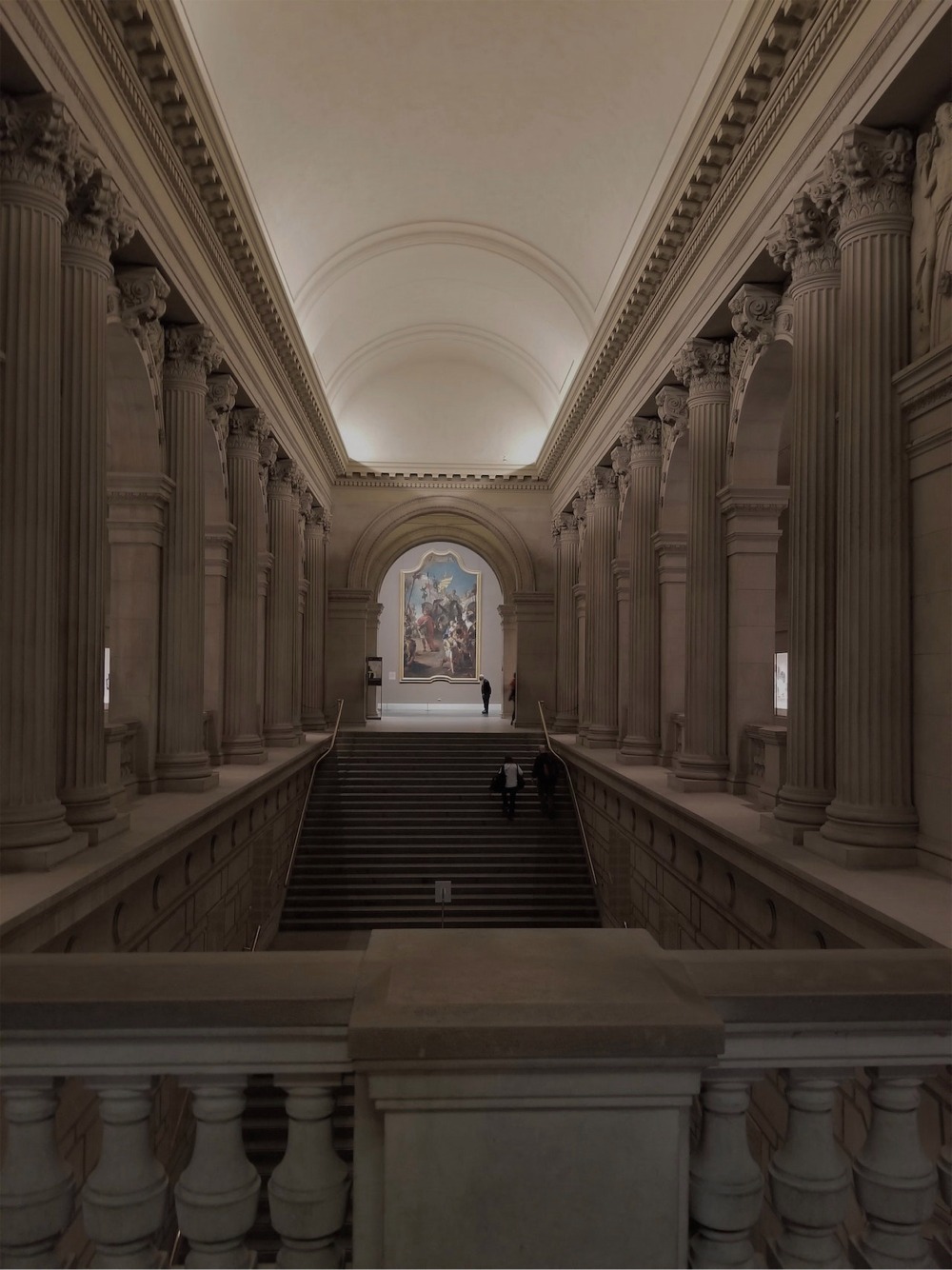The Grand Stairway
Home > New York State Photographs > Metropolitan Museum of Art > The Grand Stairway

This photograph shows a colonnaded staircase known as the Grand Stairway at The Metropolitan Museum of Art in New York City. You access the stairway from the Great Hall on the lower level. The Fifth Avenue facade, Great Hall, and Grand Stairway were designed in the Beaux-Arts style by Richard Morris Hunt and his son, Richard Howland Hunt, in the late 1890s and early 1900s.
Beaux-Arts Architecture
Beaux-Arts architecture was the academic architectural style taught at the École des Beaux-Arts in Paris, particularly from the 1830s to the end of the 19th century. It drew upon the principles of French neoclassicism, but also incorporated Renaissance and Baroque elements, and used modern materials, such as iron and glass. It was an important style in France until the end of the 19th century.
The Beaux-Arts training emphasized the mainstream examples of Imperial Roman architecture between Augustus and the Severan emperors, Italian Renaissance, and French and Italian Baroque models especially, but the training could then be applied to a broader range of models: Quattrocento Florentine palace fronts or French late Gothic. American architects of the Beaux-Arts generation often returned to Greek models, which had a strong local history in the American Greek Revival of the early 19th century. For the first time, repertories of photographs supplemented meticulous scale drawings and on-site renderings of details.
The Metropolitan Museum of Art of New York
The Metropolitan Museum of Art in New York City, colloquially "the Met", is the largest art museum in the Americas. Its permanent collection contains over two million works, divided among 17 curatorial departments. The main building at 1000 Fifth Avenue, along the Museum Mile on the eastern edge of Central Park on Manhattan's Upper East Side, is by area one of the world's largest art museums. A much smaller second location, The Cloisters at Fort Tryon Park in Upper Manhattan, contains an extensive collection of art, architecture, and artifacts from medieval Europe.
The Metropolitan Museum of Art was founded in 1870 with its mission to bring art and art education to the American people. The museum's permanent collection consists of works of art from classical antiquity and ancient Egypt, paintings, and sculptures from nearly all the European masters, and an extensive collection of American and modern art. The Met maintains extensive holdings of African, Asian, Oceanian, Byzantine, and Islamic art. The museum is home to encyclopedic collections of musical instruments, costumes, and accessories, as well as antique weapons and armor from around the world. Several notable interiors, ranging from 1st-century Rome through modern American design, are installed in its galleries.
The Fifth Avenue building opened on March 30, 1880. In 2021, despite the COVID-19 pandemic in New York City, the museum attracted 1,958,000 visitors, ranking fourth on the list of most-visited art museums in the world.
From Wikipedia, the free encyclopedia.


